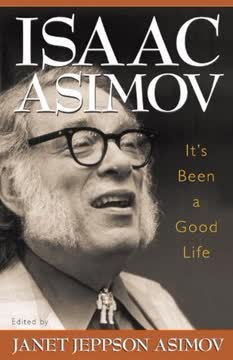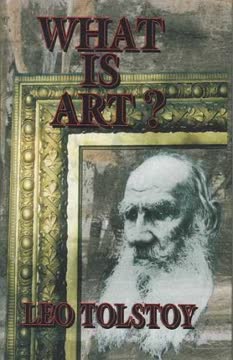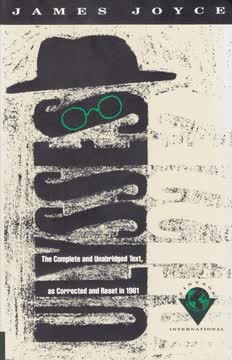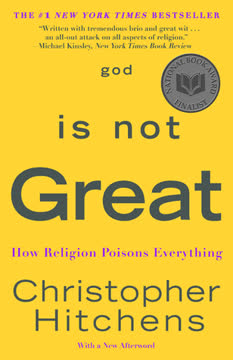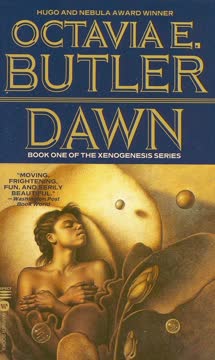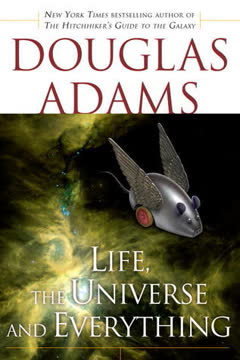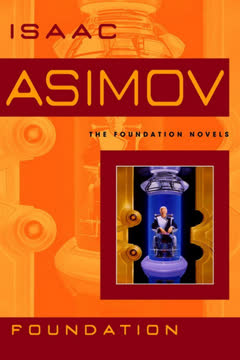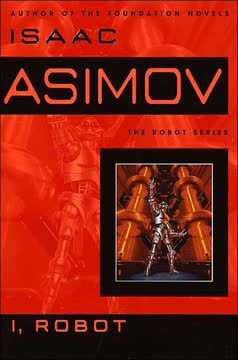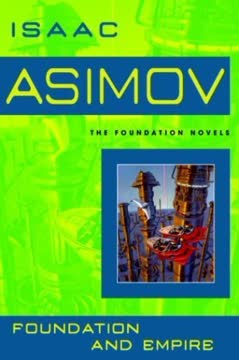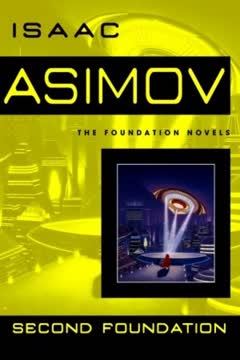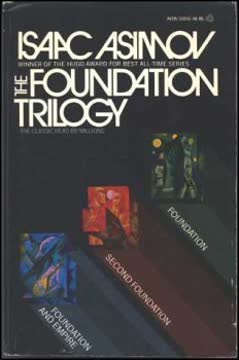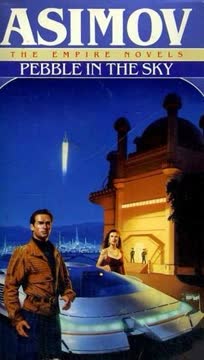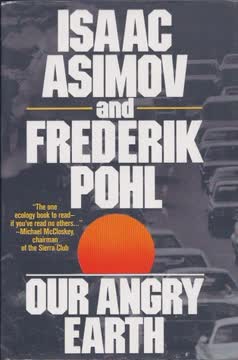Key Takeaways
1. Asimov's journey from immigrant child to prolific writer
"I am pretty temperamental about sounding untemperamental. I've thrown many a fit at any editorial suggestion that I'm the kind of author who throws fits."
Humble beginnings: Isaac Asimov's life story is a testament to the American dream. Born in Russia in 1920, he immigrated to the United States at the age of three. Growing up in Brooklyn, Asimov developed a voracious appetite for reading and learning, which laid the foundation for his future career as a writer.
Rise to prominence: Despite facing challenges as an immigrant and working in his family's candy store, Asimov's talent and dedication to writing propelled him to success. He began writing science fiction stories in his teens and sold his first story at the age of 18. This early success marked the beginning of a prolific career that would span decades and encompass hundreds of books across various genres.
Key milestones in Asimov's early career:
- First published story: "Marooned Off Vesta" (1939)
- First novel: "Pebble in the Sky" (1950)
- Breakthrough story: "Nightfall" (1941)
2. The evolution of Asimov's science fiction and robot stories
"I am probably more famous for [the Three Laws of Robotics] than for anything else I have written, and they are quoted even outside the science-fiction world."
Foundation and Robots: Asimov's two most famous series, Foundation and the Robot stories, revolutionized science fiction. The Foundation series, which began as a series of short stories in the 1940s, explored the concept of psychohistory and the fate of a galactic empire. The Robot stories introduced the famous Three Laws of Robotics, which have become a cornerstone of science fiction and robotics discussions.
Innovative concepts: Asimov's work was characterized by its emphasis on ideas and logical problem-solving rather than action or adventure. He popularized concepts such as psychohistory, positronic brains, and the laws of robotics, which have had a lasting impact on both science fiction and real-world scientific discourse.
Key elements of Asimov's science fiction:
- Focus on scientific accuracy and plausibility
- Exploration of social and ethical implications of technology
- Use of logic and reason to solve problems in storytelling
3. Asimov's commitment to science education and rational thinking
"I believe that scientific knowledge has fractal properties, that no matter how much we learn, whatever is left, however small it may seem, is just as infinitely complex as the whole was to start with. That, I think, is the secret of the universe."
Popular science writing: In addition to his fiction, Asimov was a prolific writer of popular science books and articles. He believed strongly in the importance of scientific literacy and dedicated much of his career to explaining complex scientific concepts to the general public in an accessible and engaging manner.
Championing rationalism: Asimov was a vocal advocate for rational thinking and the scientific method. He frequently spoke out against pseudoscience, superstition, and religious fundamentalism, arguing that a scientific worldview was essential for addressing the challenges facing humanity.
Asimov's contributions to science education:
- Wrote over 300 popular science books
- Authored a monthly science column for Fantasy & Science Fiction magazine for over 30 years
- Participated in numerous lectures and public speaking engagements to promote scientific understanding
4. The challenges and rewards of being a versatile writer
"I suppose there are people who are so 'lucky' that they are not touched by phantoms and are not troubled by fleeting memory and know not nostalgia and care not for the ache of the past and are spared the feather-hit of the sweet, sweet pain of the lost, and I am sorry for them-for to weep over what is gone is to have had something prove worth the weeping."
Prolific output: Asimov's incredible productivity was a defining feature of his career. He wrote or edited over 500 books and countless articles across a wide range of subjects, including science fiction, popular science, history, and even humor. This versatility allowed him to reach a broad audience and establish himself as a leading public intellectual.
Balancing act: Maintaining such a high level of output while juggling multiple genres and subjects was not without its challenges. Asimov had to constantly balance his creative impulses with the demands of publishers, readers, and his own high standards. He developed strategies to overcome writer's block and maintain his productivity, such as working on multiple projects simultaneously.
Asimov's writing process:
- Wrote quickly and without extensive revision
- Used a conversational, accessible style
- Drew upon his vast knowledge to make connections across disciplines
5. Asimov's views on religion, humanism, and the role of science in society
"I am a humanist, which means, in part, that I have tried to behave decently without any expectation of rewards or punishments after I'm dead."
Secular humanism: Asimov was a committed atheist and secular humanist. He believed that human reason and scientific inquiry, rather than religious faith or supernatural beliefs, were the best tools for understanding the world and addressing societal problems.
Science and ethics: While Asimov championed the importance of scientific progress, he also grappled with the ethical implications of technological advancements. His writings often explored the potential consequences of scientific discoveries and the responsibilities of scientists to society.
Key aspects of Asimov's worldview:
- Rejection of supernatural explanations for natural phenomena
- Emphasis on human potential and responsibility
- Belief in the power of education and rational discourse to improve society
6. The impact of personal relationships and health on Asimov's work
"I love you too."
Family and friends: Despite his intense focus on writing and intellectual pursuits, Asimov valued his relationships with family and friends. His marriages, children, and friendships with fellow writers and scientists played significant roles in shaping his life and work.
Health challenges: In his later years, Asimov faced several health issues, including heart problems and, ultimately, HIV/AIDS contracted from a blood transfusion during surgery. These health challenges affected his work and outlook on life, but he continued to write and engage with his readers until the end.
Key personal influences on Asimov's life and work:
- Early support from his parents, especially his father's belief in his writing ability
- Friendships with other science fiction writers and editors, particularly John W. Campbell
- The impact of his health issues on his perspective and writing in his later years
7. Asimov's legacy and lasting influence on science fiction and popular science
"It's been a good life."
Science fiction pioneer: Asimov's contributions to science fiction helped elevate the genre from pulp entertainment to a respected form of literature. His emphasis on ideas, scientific accuracy, and ethical considerations set a new standard for the genre and influenced generations of writers.
Science communicator: As a popular science writer, Asimov played a crucial role in making scientific concepts accessible to the general public. His clear, engaging style and ability to explain complex ideas in simple terms inspired many readers to pursue careers in science and technology.
Asimov's enduring impact:
- The Three Laws of Robotics continue to influence discussions about AI ethics
- His Foundation series inspired real-world efforts to develop psychohistory-like predictive models
- His popular science writing helped establish a model for effective science communication
Last updated:
FAQ
What is It's Been a Good Life by Isaac Asimov about?
- Condensed autobiography: The book is a one-volume condensation of Isaac Asimov’s autobiographical writings, edited by his wife Janet Jeppson Asimov, offering a candid look at his life, career, and philosophy.
- Personal and professional journey: It covers Asimov’s early years, his development as a writer and scientist, and his experiences as a humanist and public intellectual.
- Unique content: The book includes excerpts from letters, essays, and his favorite story, providing a personal and comprehensive overview of his journey.
- Focus on worldview: It explores his thoughts on writing, science, religion, and humanism, giving readers insight into his mind and values.
Why should I read It's Been a Good Life by Isaac Asimov?
- Insight into a prolific mind: Readers gain a rare, personal glimpse into the life and thought processes of one of the 20th century’s most influential science fiction writers and science popularizers.
- Inspiration and motivation: Asimov’s journey from a child prodigy in a Brooklyn candy store to a celebrated author and scientist offers motivation for aspiring writers and thinkers.
- Philosophical and literary value: The book explores Asimov’s rationalist philosophy, approach to writing, and views on science and religion, enriching appreciation of his work and legacy.
- Historical and cultural context: It provides a window into the literary and scientific worlds of the mid-20th century, including Asimov’s interactions with notable figures and social issues of his time.
What are the key takeaways from It's Been a Good Life by Isaac Asimov?
- Self-education and curiosity: Asimov emphasizes the importance of lifelong learning and self-education, regardless of formal schooling.
- Persistence and productivity: His prolific output is attributed to discipline, self-assurance, and the ability to write in short bursts without waiting for inspiration.
- Humanism and rationalism: The book highlights Asimov’s commitment to humanist values, scientific reasoning, and rejection of supernaturalism.
- Balancing creativity and discipline: Asimov’s approach combines imaginative storytelling with scientific accuracy, logical consistency, and a willingness to revise and learn from mistakes.
What were Isaac Asimov’s early life and family background as described in It's Been a Good Life?
- Russian-Jewish origins: Asimov was born in Petrovichi, USSR, in 1920 to Jewish parents who emigrated to the United States in 1922, bringing with them a mix of Slavic and Scandinavian heritage.
- Brooklyn upbringing: His parents ran a candy store in Brooklyn, where Asimov was exposed to science fiction magazines that sparked his literary interests.
- Child prodigy: He learned to read before starting school, had a remarkable memory, and was largely self-educated through voracious reading from the public library.
- Cultural influences: Although his parents spoke Russian and Yiddish, Asimov grew up speaking English, which he considered a significant advantage for his writing career.
How did Isaac Asimov become a science fiction writer according to It's Been a Good Life?
- Early storytelling: Inspired by a friend, Asimov began telling and then writing stories around age 12, starting with fantasy and moving to science fiction.
- Mentorship by John W. Campbell: Meeting Campbell, the editor of Astounding Science Fiction, in 1938 was pivotal; Campbell’s guidance and criticism helped Asimov refine his craft.
- Persistence through rejection: Asimov faced multiple rejections before selling his first story, "Trends," in 1939, demonstrating determination and resilience.
- Breakthrough success: His story "Nightfall" (1941) became a classic, marking a turning point and launching his prolific career in science fiction.
What are the Three Laws of Robotics introduced by Isaac Asimov in It's Been a Good Life?
- Definition of the laws: The Three Laws are: (1) A robot may not injure a human or allow a human to come to harm; (2) A robot must obey human orders unless they conflict with the First Law; (3) A robot must protect its own existence unless this conflicts with the First or Second Laws.
- Origin and development: The concept emerged from discussions with Campbell and was formalized in Asimov’s robot stories starting in 1941.
- Impact on science fiction: The laws provided a logical framework for robot behavior, revolutionizing the genre and influencing writers and thinkers beyond literature.
- Asimov’s perspective: He credited Campbell’s influence and welcomed other writers’ use of the concept, noting that the laws made robot stories more intelligent and less clichéd.
What are Isaac Asimov’s key methods and advice on writing from It's Been a Good Life?
- Write anytime, anywhere: Asimov believed a compulsive writer must be able to write in short bursts, even for just fifteen minutes, without waiting for ideal conditions.
- Self-assurance and enthusiasm: He stressed the importance of loving one’s own writing and not doubting every sentence, which allowed him to draft quickly with minimal revision.
- Avoiding writer’s block: When stuck, Asimov would switch to another project—essays, stories, or nonfiction—to keep his productivity high and his mind refreshed.
- Clarity and simplicity: He valued a plain, clear style and avoided excessive literary frills, focusing on making his writing accessible and direct.
How does Isaac Asimov describe his approach to knowledge and learning in It's Been a Good Life?
- Lifelong self-education: Asimov maintained a constant program of self-education, expanding his library and studying diverse subjects to enrich his writing.
- No knowledge wasted: He believed that even seemingly restrictive or tedious work, like writing encyclopedia entries, contributed to his overall knowledge and skill.
- Openness to correction: Asimov acknowledged making mistakes and valued reader feedback, demonstrating humility and a commitment to accuracy.
- Curiosity-driven exploration: His wide-ranging interests and willingness to learn new topics fueled both his fiction and nonfiction writing.
How does It's Been a Good Life by Isaac Asimov address his views on humanism and religion?
- Humanist identity: Asimov identifies as a humanist, rejecting supernatural beliefs and emphasizing reason and science as the means to understand the universe.
- Critique of prejudice: He discusses the universality of prejudice and criticizes narrow views that focus solely on one group’s victimization, advocating for broader ethical concerns.
- Public advocacy: Asimov served as president of the American Humanist Association and signed both Humanist Manifestos, using his platform to promote scientific reasoning and combat pseudoscience.
- Personal reflections: He shares anecdotes and philosophical musings on atheism, the afterlife, and the importance of intellectual activity as his version of "Heaven."
What health challenges does Isaac Asimov discuss in It's Been a Good Life, and how did they affect him?
- Heart attack and surgery: Asimov suffered a mild heart attack in 1977 and underwent triple bypass surgery in 1983, continuing to work despite physical limitations.
- Progressive decline: He experienced worsening angina, kidney problems, and a leaking heart valve, which eventually led to hospitalization and surgery cancellation.
- Living with HIV/AIDS: The epilogue reveals that Asimov contracted HIV from a blood transfusion during surgery, living with AIDS privately until his death in 1992.
- Acceptance and resilience: Despite health struggles, Asimov remained productive and accepted mortality with rational calm, documenting his experiences in diary entries.
What are some of Isaac Asimov’s notable literary experiments and series developments discussed in It's Been a Good Life?
- Black Widowers series: Asimov created a mystery short story series based on a real-life club, featuring a clever waiter who solves puzzles, which became one of his most enjoyable works.
- Foundation and Robot series revival: He returned to write new Foundation novels and completed the Robot series, eventually merging the two into a single universe, discussing the challenges of recapturing earlier styles.
- Humor in writing: Inspired by P. G. Wodehouse, Asimov experimented with humor in science fiction, including stories featuring a tiny demon named Azazel.
- Integration of genres: His willingness to blend mystery, science fiction, and humor showcased his versatility and creative experimentation.
What is the significance of the story "The Last Question" included in It's Been a Good Life by Isaac Asimov?
- Exploration of entropy: "The Last Question" is a science fiction story that deals with the ultimate fate of the universe and the possibility of reversing entropy, spanning trillions of years.
- Philosophical depth: The story reflects Asimov’s interest in thermodynamics, cosmic evolution, and the limits of knowledge, ending with the hopeful phrase "LET THERE BE LIGHT!"
- Personal favorite: Asimov considered it his best and most beloved short story, illustrating his ability to combine scientific concepts with storytelling and existential questions.
- Included as an appendix: Its inclusion in the book highlights its importance to Asimov’s legacy and offers readers a direct example of his narrative and philosophical style.
What are the best quotes from It's Been a Good Life by Isaac Asimov and what do they mean?
- "It's been a good life": This phrase encapsulates Asimov’s satisfaction and gratitude for his journey, reflecting contentment despite challenges.
- On rationalism vs. atheism: "The word 'atheist,' meaning 'no God,' is
Review Summary
It's Been a Good Life receives mostly positive reviews, praised for its insights into Asimov's life and writing process. Readers appreciate his wit, intelligence, and prolific output across various genres. Some note the book's fragmented nature due to editing from multiple sources. Many are surprised by the breadth of Asimov's non-fiction work. The epilogue's revelation about Asimov's AIDS diagnosis shocked some readers. Overall, fans of Asimov's work find the autobiography engaging and inspiring, though a few suggest the full trilogy might offer a more comprehensive view.
Similar Books
Download PDF
Download EPUB
.epub digital book format is ideal for reading ebooks on phones, tablets, and e-readers.
